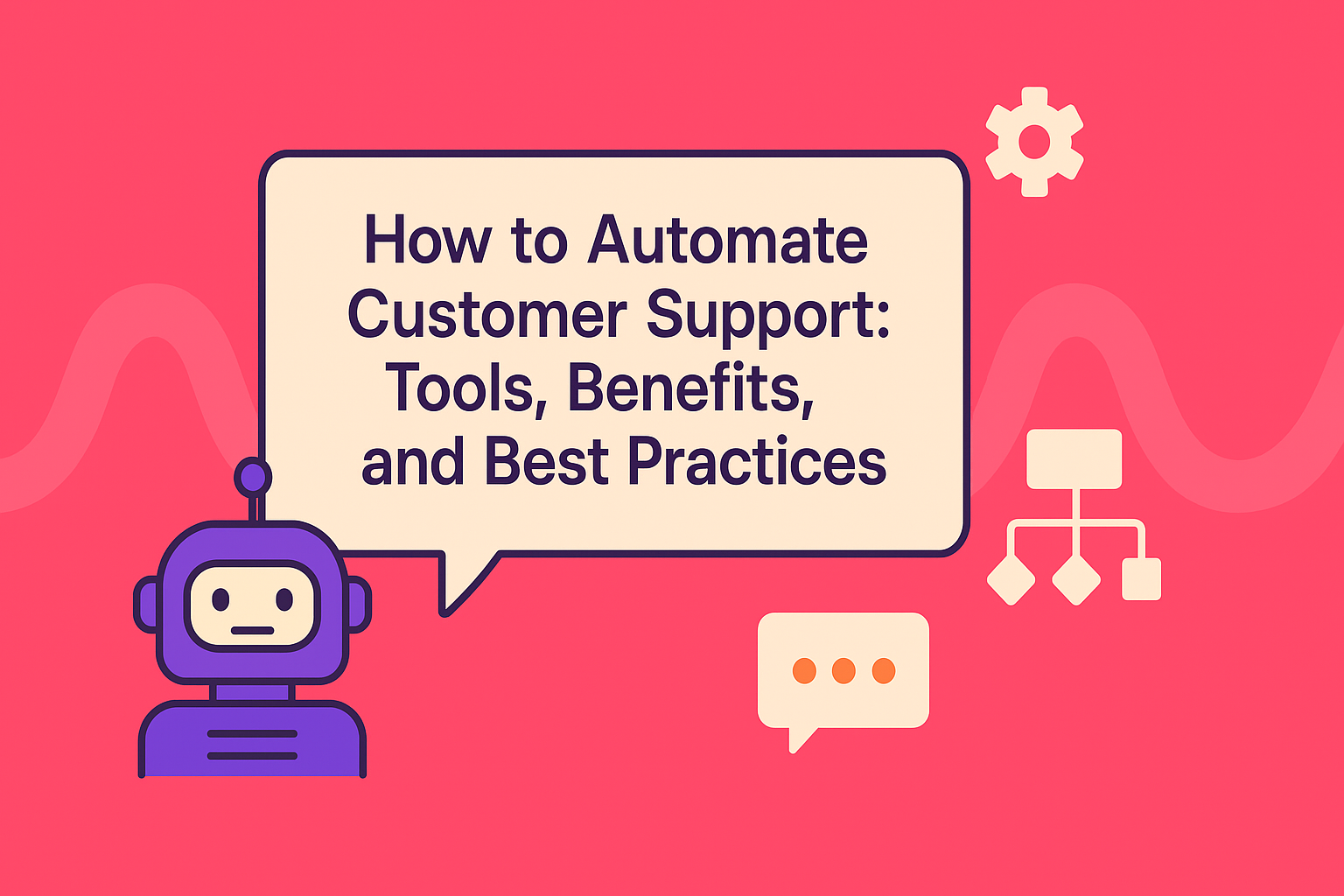
Customer expectations are higher than ever. They want instant answers, 24/7 availability, and personalized support across multiple channels. For growing businesses, keeping up with these demands manually can be costly and inefficient.
That’s where automation comes in. Learning how to automate customer support not only reduces response times but also improves customer satisfaction while lowering operational costs. From AI-powered chatbots to smart ticketing systems, customer support automation has become a necessity for IT services, SaaS, and eCommerce companies looking to scale without sacrificing quality.
In this guide, we’ll cover what customer support automation means, the benefits, the best tools, and actionable steps to get started.
Automating customer support means using technology—such as chatbots, AI assistants, automated ticketing, and self-service portals—to handle repetitive customer queries without requiring constant human involvement.
Instead of support agents manually answering every “Where’s my order?” or “How do I reset my password?” request, automation tools can deliver instant, accurate responses. These tools can also collect customer data, route tickets to the right departments, and integrate with CRMs to provide seamless support.
Key examples of customer support automation include:
By combining these methods, businesses can create a support system that’s faster, smarter, and highly scalable.
Understanding why to automate customer support is just as important as knowing how. The benefits go beyond convenience—automation directly impacts business efficiency and customer satisfaction.
Automation ensures customers get instant replies, even outside of business hours. This reduces wait times and boosts satisfaction.
Unlike human agents, automated systems never sleep. Customers can find help at any time, from any location.
By reducing repetitive manual tasks, companies can handle more queries without hiring large teams, saving significantly on staffing costs.
AI-driven tools can personalize responses, suggest relevant articles, or escalate issues to the right human agent quickly.
Automation platforms track metrics like resolution times, customer satisfaction, and query trends—helping businesses continuously improve support strategies.
In short, automating customer support allows companies to scale efficiently, serve more customers, and maintain consistent quality across every interaction.
Choosing the right tools is critical when deciding how to automate customer support effectively. The market offers a wide range of platforms designed to streamline communication, reduce manual effort, and enhance customer satisfaction.
Popular customer support automation tools include:
Each tool offers unique features, but the best solution often comes from combining chatbots, ticketing, and knowledge base software into one cohesive support strategy.
For businesses asking “how do I automate customer support?”, the process can be broken into clear, actionable steps.
Step 1: Identify Repetitive Queries
Analyze support tickets and FAQs to determine which customer questions can be automated first.
Step 2: Select the Right Automation Platform
Choose tools that integrate with your CRM and communication channels for seamless workflows.
Step 3: Build a Self-Service Knowledge Base
Provide customers with detailed guides, FAQs, and tutorials to reduce dependency on live agents.
Step 4: Integrate Chatbots and Automated Workflows
Deploy chatbots on your website, app, and social channels. Set up workflows to route tickets, send follow-ups, and escalate complex issues.
Step 5: Monitor and Optimize Performance
Track KPIs such as average resolution time, CSAT, and deflection rates. Continuously refine automated processes based on customer feedback and analytics.
Implementing automation successfully requires strategy. Simply installing a chatbot or helpdesk software is not enough. Businesses must follow best practices to ensure automation enhances, rather than damages, the customer experience.
When executed properly, these best practices ensure that automation delivers faster support, cost savings, and improved customer experiences without losing the human touch.
While learning how to automate customer support brings significant benefits, businesses often encounter challenges during implementation. Recognizing these issues in advance helps in building stronger systems.
Automation can sometimes feel impersonal, especially for sensitive or complex issues. To address this, businesses should adopt a hybrid model where bots handle repetitive queries and escalate complex cases to human agents.
Chatbots and AI tools are only as good as their training data. Poorly configured bots may frustrate customers with generic or irrelevant answers. Regular updates, testing, and supervised training ensure AI performs effectively.
Some customers still prefer human interaction. Providing clear options to connect with live agents builds trust and avoids frustration.
Automation tools must integrate seamlessly with CRMs, ticketing systems, and communication platforms. Choosing tools with open APIs and strong integrations helps minimize disruptions.
The future of customer support automation goes beyond simple chatbots. With advances in artificial intelligence and machine learning, automation is evolving into a powerful driver of personalized customer experiences.
As technology advances, businesses that adopt these innovations will be able to deliver faster, smarter, and more meaningful support at scale.
The best way is to start with repetitive queries using chatbots and self-service knowledge bases, then expand into ticketing and CRM integrations for a complete automated workflow.
Yes. Even small businesses benefit from automation through affordable tools like chatbots, helpdesk platforms, and automated email responses that save time and reduce costs.
AI improves customer support by providing instant, accurate answers, learning from customer interactions, and delivering personalized solutions across multiple channels.
Automation and outsourcing are not mutually exclusive. Automation handles repetitive tasks efficiently, while outsourcing ensures human agents can manage complex or sensitive issues. A hybrid model often works best.
Key metrics include average response time, first-contact resolution rate, ticket deflection rate, customer satisfaction (CSAT), and net promoter score (NPS).
Automating customer support is no longer optional—it is a competitive necessity. From AI chatbots and automated ticketing to predictive support powered by machine learning, businesses have multiple ways to reduce costs while improving customer experiences.
By understanding how to automate customer support effectively—choosing the right tools, following best practices, and addressing common challenges—companies can build scalable systems that balance efficiency with empathy.
The next step for businesses is to act strategically: start small, automate the most repetitive tasks, measure results, and expand automation over time. Done right, customer support automation doesn’t just save money; it builds stronger customer relationships and ensures long-term growth.